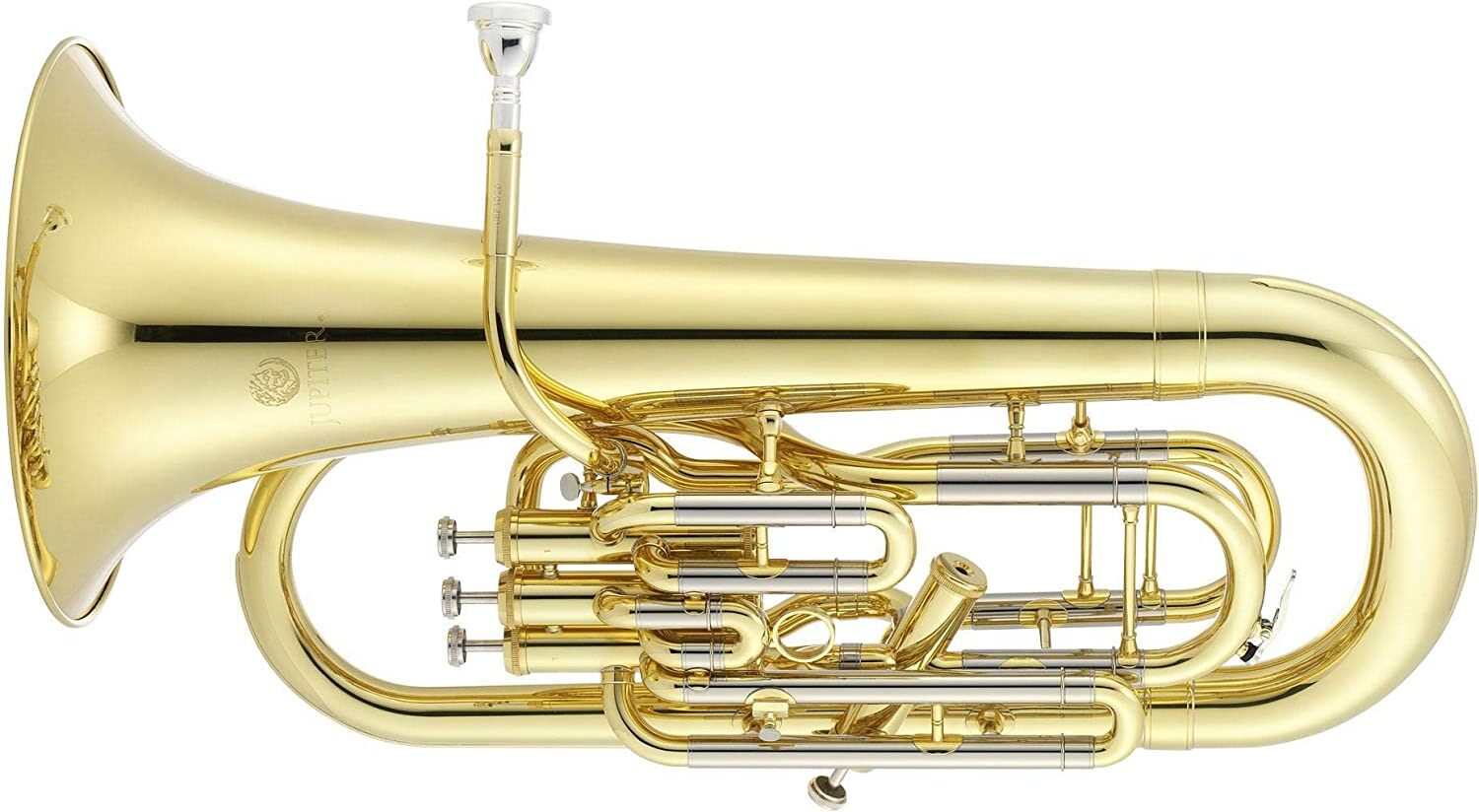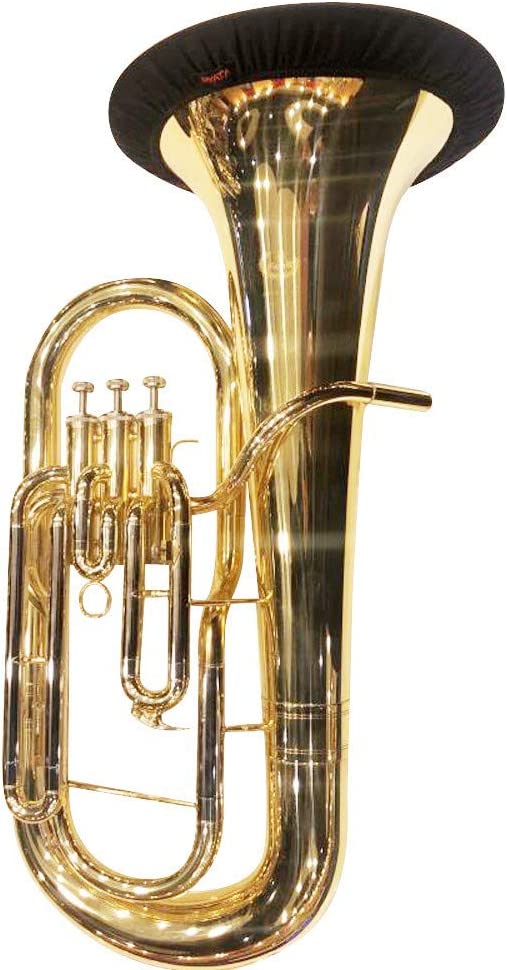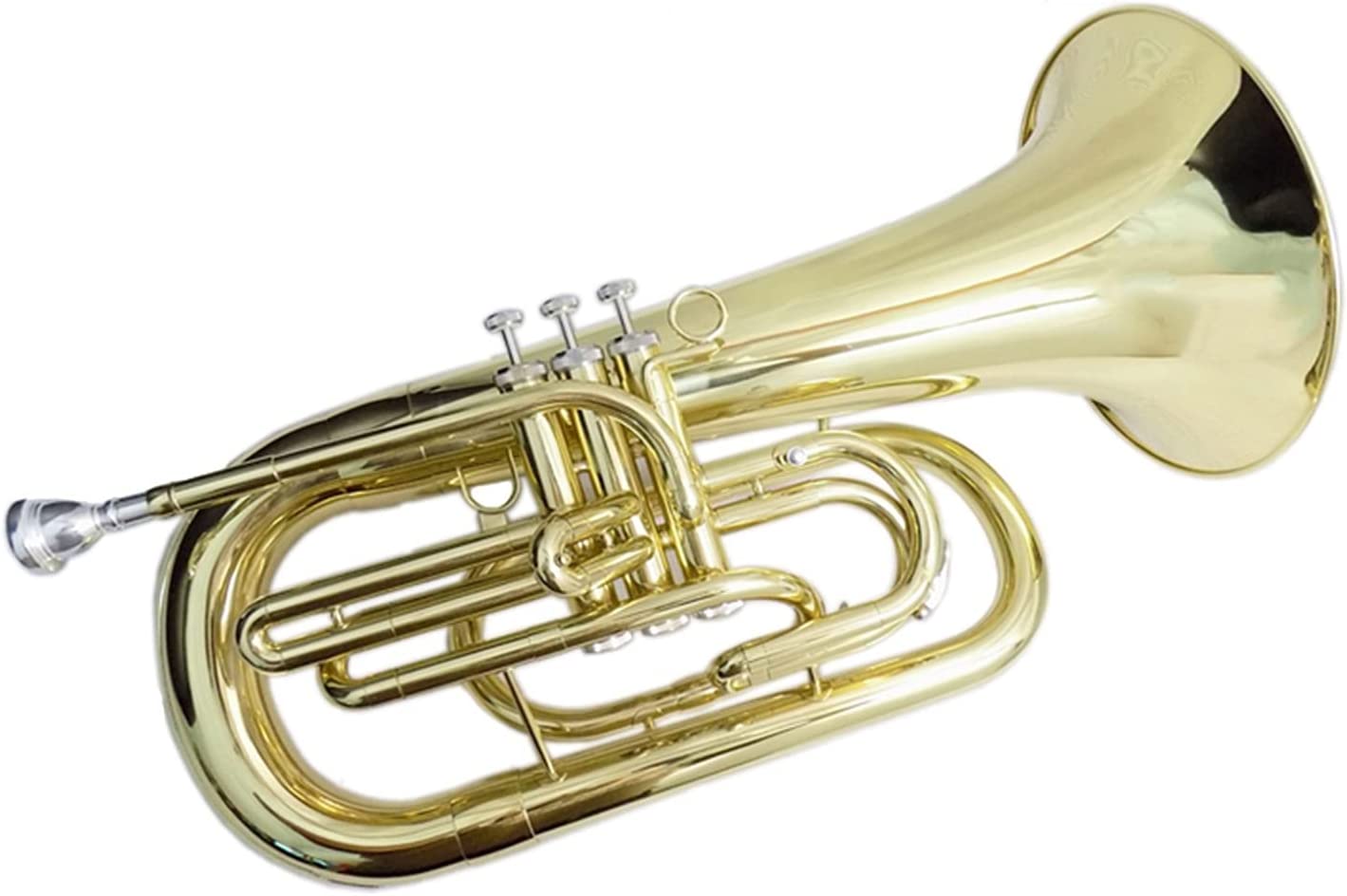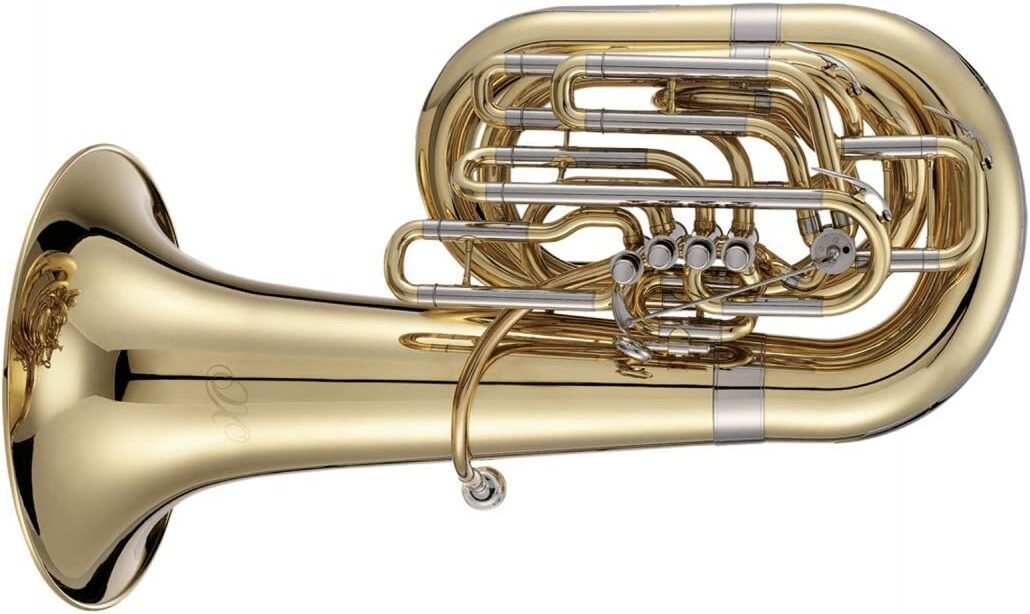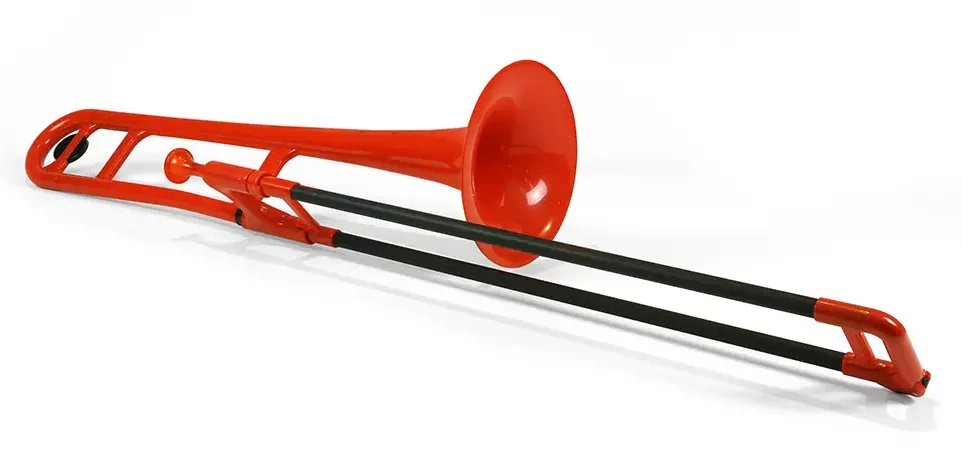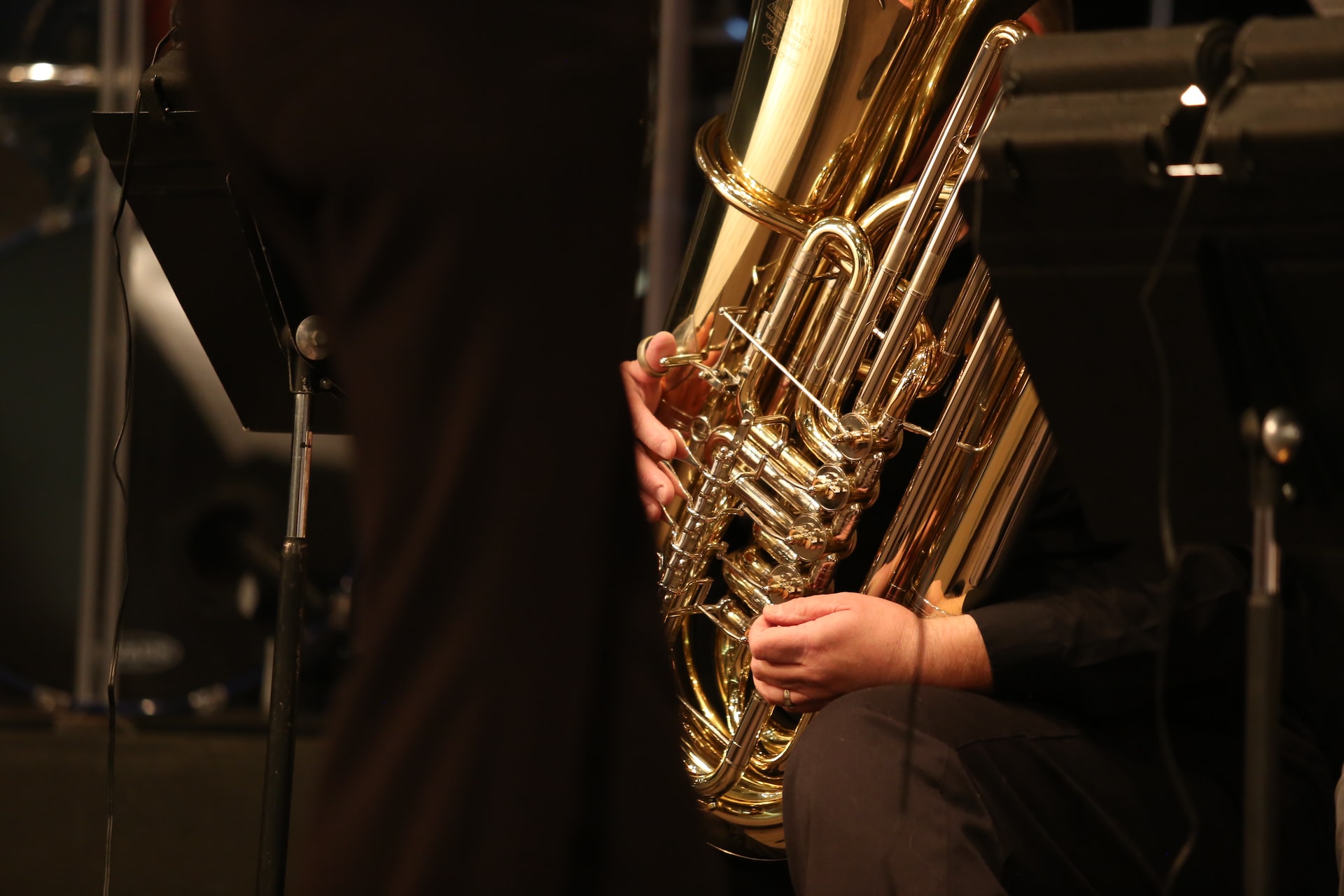- Vintage Trumpets Guide - October 13, 2022
Nameless/faceless character whom I manifested specifically for this introduction: Uh, what? Where am I? Who is this? Why is it so dark?
Me: Oh my god…
Character 1: God, is that you?
Me, exterminating the character and manifesting a different, less-anxious character: Okay, starting this article with a Euphonium pun. I need your assistance
Character 2: Yessir, what do you need?
Me: Okay, so how would you succinctly explain that somebody presents themselves as somebody they’re not?
Character 2: I would probably yell “You fake!”
Me: We’re on the right track! Use a synonym and be more confused about it.
Character 2: You phony! Um…
*Curb Your Enthusiasm closing credits play*
Intro

Germany has the ‘kleine bass’ or ‘baryton’. The Italians? They have the ‘flicoino basso’. Spain has their ‘bombadino’. And the French? They play a ‘Saxhorn-basse’ or ‘clarion-basse’. These are names worldwide for the same instrument: the euphonium. And much like its many names, the euphonium is a rather versatile instrument, working its way into traditional brass bands, the rogue wind band, and occasionally classical orchestras. Its sound is very distinct, possessing a warmer and softer tone than the often-confused-with baritone horn. This warm tone combined with the unique technical ability bestowed by the valves means the euphonium can be right at home as a solo instrument or fit in perfectly with an ensemble.
I’ve been playing music for over twenty years now, playing in everything from jazz ensembles to concert bands to unrehearsed acoustic-folk-punk to impromptu jams on rooftops to backyard brass bands. I’ve been exposed to all different kinds of music by all different kinds of musicians playing all different kinds of instruments and the euphonium still stands out to me as a special instrument that just scratches the right itch.
History
The euphonium does not resemble its ancestor. All low-brass instruments, euphoniums included, can trace themselves back to the Serpent, an instrument from 1400-1500s Europe, which itself evolved from the S-shaped cornetts from 16th-century Italy. It might be safe to say that the Serpent doesn’t resemble any of its descendants. It had a long, twisting body in the shape of a, well, serpent. It was generally made of wood which was covered in a dark-colored leather. The bore was conical. Interestingly, the Serpent had no defined range. The range of the Serpent depended on the construction of each individual instrument and the skill of its musician.
From the Serpent came the Ophicleide (from the Greek ophis, meaning ’serpent’ kleis, meaning ’key’), another conical-bore brass instrument constructed with keys, compared to the Serpent’s finger holes. Invented in the early 1800s in France by Jean Hilaire Aste, the Ophicleide was created in the alto, bass, and contrabass ranges, as well as two different keys, C and B♭. As big a step forward as the ophicleide was, it was still notoriously fickle, especially in its higher registers. It lasted barely a century before being phased out at the end of the 19th century by the early forms of the tuba.
In 1818, a major breakthrough allowed for the first versions of the brass instruments as we recognize them today: the piston valve system. The piston valve system removed the unpredictability in tone across all registers that existed in the serpent and ophicleide. The modern-day family of tubas owes its existence to many inventors and innovators. Johann Gottfried Moritz, a German instrument builder, innovated a more reliable valve system and, with it, invented the Bass Tuba in 1835. His son, Carl Moritz, invented the tenor tuba a few years later. Not 5 years later, Ferdinand Sommer is credited with inventing the first euphonium, a brass instrument with a tenor voicing.
Nonetheless, Adolphe Sax’ (most famous for the saxophone) family of saxhorns shared many similarities to tubas and euphoniums. In 1874, the “British-style” euphonium was manifested by David Blaikley thanks to his invention of a four-valve automatic compensating system (a fourth valve tubing winds back through the first three so when it is used, the air is much more efficiently routed through extra compensating loops.) Over the centuries, these innovations have inspired each other and left indelible marks on the construction of all modern-day brass instruments.
Quick Facts
“Euphonium” comes from the Greek word “euphōnos” which translates to “sweet sounding”. (What other instrument has the confidence to have a name that basically means ‘I’m the best’?) When the euphonium was first invented, it absolutely exploded in popularity. During the mid-19th century in Britain, amateur brass bands were the hot new trend and, by the end of the century, estimates place the number of brass bands at 40,000. Extrapolating from that number, we can surmise that 60,000 people were playing the euphonium in Britain by the end of the 19th century.
The euphonium did not just flourish in Britain. Worldwide, military bands were adopting the euphonium with great enthusiasm. Mid-century France required their infantry and cavalry bands to have at least four bass saxhorns and two baritone horns. Japan’s military band in 1870 employed two euphoniums.
While euphoniums aren’t always present in orchestras (the euphonium’s easily-blended tone isn’t as necessary with a full orchestra and expert tuba players can cover the range of euphoniums), their tone can easily fill in other for other horns in a pinch. As such, they have been a favorite for concert bands. Despite all this, it takes a great deal of skill to be a euphoniumist (or is it euphophonist? euphonist? There’s no hard consensus on what these musicians are named!). Most euphonium music is written in the key of C whereas the euphonium is a B♭ instrument meaning that these musicians are transposing on the fly.
Variations
3-Valve vs 4-Valve Euphoniums
Euphoniums come in 3-Valve or 4-Valve varieties (mostly. 5-Valve euphoniums exist. See below). The differences are pretty straightforward. 3-Valve euphoniums have 3 valves (shocking, I know). These instruments tend to lack the personal handcrafted touch and are designed with economy and durability in mind rather than playability. Thus, they are generally preferred amongst beginners and students.
4-Valve euphoniums give the musician more opportunity and flexibility in terms of tone and are preferred amongst professional musicians. 4-Valve euphoniums can either have all 4 valves on top or 3 valves on top and one on the side. The latter is known as a 3+1 configuration. Many players prefer the 3+1 configuration as the pinky finger isn’t as strong as the other fingers, allowing for better articulated and confident performances. Furthermore, a 3+1 configuration has more conical tubing between the 3rd and 4th valves, which improves intonation.
Compensating vs Non-compensating Euphoniums
4-Valve euphoniums are also sorted into one of two categories: compensating vs. non-compensating. A compensating euphonium is named for its fourth valve. The fourth valve on compensating euphonium sends air through a length of auxiliary tubing. By “lengthening” the instrument in this way, the musician can more easily hit the notes in the instrument’s lower register (to keep them in tune). It “compensates” for the instrument’s tendency to play sharp.
The fourth valve on a non-compensating euphonium operates like any other valve. The pitch is lowered 2.5 steps when using the fourth valve. The compensating system was invented to aid in intonation. The very physics of brass construction means that some notes will be out of tune as brass instruments are naturally tuned to the harmonic series and the harmonic series does not always line up with standard pitches (very informative video here). Compensating systems can only do so much so other innovations have been made.
Triggers
Some euphoniums are constructed with a trigger on the main tuning slide. By utilizing this trigger, the musician can adjust for the notes on their euphonium that will not fall in line with traditional, Western music pitches. However, due to the way euphoniums are held, this trigger isn’t as easy to activate as, say, a trumpet player can adjust their valves. Unless there are bars of rest both before and after these pitches -which also happen to be isolated from the other pitches- a trigger isn’t terribly useful. Furthermore, they are expensive to install and rare. Also rare are compensating systems on some vintage, 3-valve euphoniums. These euphoniums are no longer in production.
Materials
The materials from which a euphonium is made can have a noticeable impact on the sound. They are available in lacquer and silver-plated finishes of which the former is the most popular choice. Lacquer gives the euphonium a darker sound, especially in the lower register. Likewise, silver-plate finishes (often found on professional models) gives the euphonium a warmer tone.
Types of Euphoniums
Basic Euphonium (but not like a bad basic)
The basic euphonium occupies an important space in the brass instruments’ tenor range. Constructed with a conical bore and large bell, the euphonium has a darker, rounder tone, comparable to the French horn. The euphonium is versatile, its timbre often used to help fortify the sound of other brass instruments, but distinct enough to step forward into the spotlight and solo or tackle challenging melodic passages.
As stated above, the euphonium comes in 3-valve and 4-valve varieties and may or may not contain a compensating system. Most professional players prefer 4-valve, compensating euphonium with a silver-plated finish and an upright bell (British-style), but if you’re looking to play the euphonium, the decision comes down to you and what you’re looking to get out of the instrument. Personally, I would advocate for you to purchase a 4-valve euphonium with a compensating system. The improved intonation and range will seem like a godsend as you progress with your instrument.
British Style Vs. American Style
Euphoniums are also categorized by the direction their bell faces. A British-style euphonium has its bell pointing straight up. This projection of sound up is ideal for concert halls. American-style euphoniums have their bell pointing forward. These euphoniums are better suited for marching bands and outdoor performances, projecting their sound straight towards their audience without the aid of a multi-million dollar ceiling of a concert hall to direct their sound.
Rotary Valve
The rotary valve euphonium is also known as the tenor horn in the European countries where it is most popular, mainly among Czech and Germanic bands. This euphonium is defined by its rotary valves rather than the traditional piston valves. The rotary valves give the tenor horn a louder and brighter tone, comparable to that of a baritone horn. This is not without its drawbacks though. The change in tone makes it difficult for this euphonium to blend in with the other instruments whereas the rotary valves give the instrument a slower action.
The Rotary Valve Euphonium also has its bell curved roughly 30-degrees from the top, giving it an appearance similar to the Wagner tuba. However, the Wagner Tuba plays a very different role in bands and is not interchangeable with the Rotary Valve Euphonium.
Double Bell Euphonium
The Double Bell Euphonium is uniquely American in the sense that it seems somebody looked at the euphonium and thought “I WANT MORE EUPHONIUM IN MY EUPHONIUM”. The Double Bell Euphonium came to be in the late 19th century. Despite its borderline ridiculous nature, this euphonium is quite clever. This euphonium operates very much like any other 4-valve euphonium. When the 5th valve is pressed, the sound is diverted through to the smaller bell. The larger bell produces the traditional warm sound of the euphonium. The smaller bell produces a much brighter tone, comparable to that of a trombone. In effect, it incorporated the cylindrical bore of a valve trombone into the conical bore of a euphonium.
The Double Bell Euphonium enjoyed nearly 70 years of production, first engineered by famous manufacturer Charles G. Conn (albeit, before the official founding of his company), in the 1880s. It exploded in popularity towards the end of the decade after Miguel Raffayolo and Harry Whittier of the Patrick Gilmore Band took it up. Famous composer of military marches, John Philip Sousa, incorporated the Double Bell into his repertoire. The double bell euphonium peaked in popularity during the first couple of decades of the 20th century. The appeal of the smaller bell wore off and musicians opted to play traditional euphoniums. Production was ended in the 1960s, but they remain popular today amongst collectors.
Marching Euphonium
Despite being a euphonium variant, it evolved separately from the traditional euphonium. Its ancestor is the tenor bugle which existed in the key of G. Over time, more valves were added to the instrument, ultimately placing it in the key of B♭, matching many brass instruments today, including the (most popular) trumpet and the basic euphonium.
This euphonium was designed specifically for marching band performances. The instrument was constructed to allow the musician to hold it as one holds a trumpet which balances the musician better while marching. You can imagine how holding a 10 lb. instrument on one side of your body for an extended period of time can lead to quicker fatigue. Furthermore, the bell is pointed forward on this instrument which, much like an American-style euphonium, is perfect for projecting the sound outdoors. This instrument does not come without drawbacks though. The weight of the marching euphonium (compared to other instruments) can fatigue a musician over time and -without proper warming up, stretching, etc.- can lead to back, neck, and shoulder pain.
Five Valve Euphonium
The 5-Valve Euphonium was popular at the turn of the 20th century. While some Double Bell Euphoniums were constructed with five valves, 5-Valve Euphonium refers to its own instrument. The 4th and 5th valves on these euphoniums increased the number of possible finger combinations from 8 to 31. They were also added to the euphonium to correct the tuning of the euphoniums of its day. The fifth valve lowered the pitch of the euphonium a whole step.
The 5-valve euphoniums’ days were numbered as the compensating systems of the 4-valve euphoniums continued to improve. The 5th valve was rendered a frivolous add-on to the euphonium and manufacturers and players alike determined the value provided by the 5th valve was low. While 5-valve euphoniums are no longer in production at the scale as they used to be, there do exist 5th valve attachments to correct the tuning on non-compensating euphoniums. Much like a 5-valve tuba, this rotary valve is thumb-operated.
Plastic Euphonium
So long as plastic has been manufactured, scientists and instrument engineers have been incorporating it into musical instruments. Plastic “brass” instruments really exploded in popularity about a decade ago with the introduction of the pbone. Cool Winds makes a plastic euphonium, a 4-valve euphonium in the 3+1 configuration. The tone is more hollow than a traditional euphonium and it lacks the durability of brass instruments, but it is nonetheless an affordable option for beginners. The plastic euphonium may also be a great option for children who do not yet have the physical strength and endurance to hold a brass euphonium.
The Weird Ones
Over the Shoulder Euphonium
The American Civil War featured some of the strangest brass instruments in (modern) history. These instruments were designed to help lead troops into battle. As these musicians marched towards the front of their respective armies, innovations were needed so the troops behind them could hear. As such, Over-The-Shoulder instruments were developed with a backward-pointing bell. The whole range of brass instruments (from bugles to tubas) was developed in this manner.
Tornister Euphonium
Tornister translates roughly to satchel in Polish and other European languages. These euphoniums are defined by their tightly wrapped coil and an upwards-pointing bell. Their popularity peaked during WWI in the Austria-Hungarian empire. These euphoniums were quickly rendered obsolete. The tight coiling of the euphonium’s tubing made it much more challenging for musicians to push air through which also lent a harder, darker tone to this instrument.
Not quite…
A baritone horn looks strikingly similar to a euphonium, but they have key differences. For starters, baritones evolved from the saxhorns invented by Adolphe Sax. The baritone is constructed with a cylindrical bore shape and a smaller bell. These characteristics give the baritone a warmer, softer sound compared to the euphonium. Though this is an article about euphoniums, credit must be given where credit is due. The baritones are preferred by both British brass bands as a harmonizing instrument and by marching bands as their lighter tone and easier projection is more conducive to a marching environment.
Pros and Cons of the Euphonium
Pros
- The euphonium has a rich history over the past nearly two centuries meaning there is a plethora of resources to aid in learning the euphonium.
- The euphonium has an unmistakable, warm tone
- It is easy to transition to and from other jazz instruments.
- The euphonium is (relatively) physically easy to play. The risk of injury from repetitively playing is low
Cons
- Euphoniums don’t have as wide a range of options as some instruments (eg. trumpet)
- Euphoniums play an important role in concert, marching, and brass bands, but are yet to achieve recognition and validation by orchestras.
- Considering its size, it is one of the more difficult (brass) instruments to transport.
Also, check out this article with plenty of other euphonium players chiming in about their personal pros and cons.
FAQ
Answer: Euphoniums belong to the tuba family, but there are notable differences. For one, the (B♭) tuba has twice the length of tubing of a euphonium, resulting in pitches an octave lower. Also, while tubas and euphoniums each come in 3- or 4-valve varieties, the intonation for a euphonium might prove more difficult for a beginner. Furthermore, It’s unlikely that a tuba will ever be used as a solo instrument.
Answer: While they look extraordinarily similar from the outside, the inner workings reveal an important distinction. The euphonium has a larger, conical bore shape while the baritone has a smaller, cylindrical bore shape. This difference in bore shape ultimately gives the baritone a warmer and brighter tone. A baritone also has a tighter wrap and a smaller bell size.
Answer: There is no instrument that is easy to play proficiently without hours upon hours upon hours of dedication to the craft.
That being said, euphoniums may be particularly difficult to learn. A euphonium is a relatively heavy instrument compared to most brass and wind instruments. There is a lot of (wide) tubing to push air through. This can put a lot of stress on a beginning player’s embouchure which may not just make it difficult to play, but play in tune.
Conclusion
The euphonium has a rich history and a fantastic tone and playability to warrant such a history. It is an ergonomically sound instrument that makes learning and playing an enjoyable (but appropriately challenging) experience. Euphoniums are not the most popular (brass) instrument which means there are plenty of vacancies to fill in bands and opportunities to step up and shine. Furthermore, the similarities between euphoniums and other brass instruments make hopping to and from the euphonium an accessible endeavor, giving euphonium players even more opportunities to play music. Happy playing!
Looking for more interesting readings? Check out:


